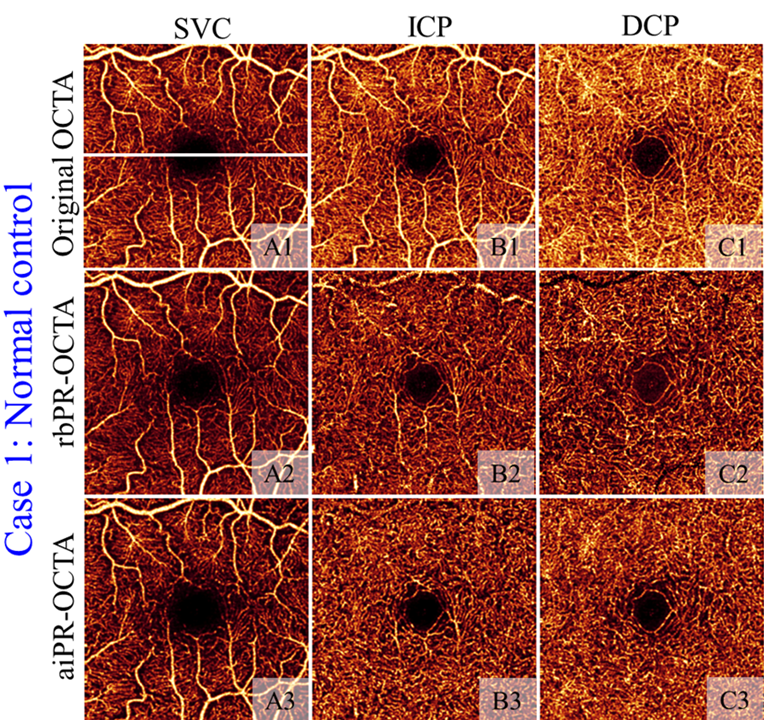Categories | Inventors
Technology Overview
OHSU # 3193 — Artificial Intelligence-Assisted Projection-Resolved Optical Coherence Tomographic Angiography (aiPR-OCTA)
Summary
The current artificial intelligence algorithm removes projection artifacts in optical coherence tomographic angiography images and improves the signal-to-noise ratio.
Technology Overview
A major limitation of optical coherence tomography angiography (OCTA) are image artifacts, particularly projection artifacts, which make the detection of flow changes difficult to localize.
Researchers from OHSU’s Casey Eye Institute have developed the first artificial intelligence algorithm to remove OCTA projection artifacts. The AI algorithm consists of a combined convolutional neural network and sequence-to-sequence network and was developed using 4600 OCTA scans, which included scans of age-related macular degeneration and diabetic retinopathy.
Compared to a state-of-the-art rules-based algorithm (rbPR-OCTA) the AI model removes more projection artifacts and preserves more flow (see Figure). Validation in scans from 126 normal eyes demonstrated several advantages of the AI model, including:
- Removal of large residual vessel patterns in the rbPR-OCTA while preserving true anatomic detail at the capillary scale.
- Increased vessel density and vessel connectivity as compared to rbPR-OCTA, consistent with aiPR-OCTA preserving more flow signal.
- Increased suppression of background artifacts compared to rbPR-OCTA.

Publication
J Wang, Tristan Hormel, Yali Jia; Artificial Intelligence-assisted Projection-resolved Optical Coherence Tomographic Angiography (aiPR-OCTA). Invest. Ophthalmol. Vis. Sci. 2022;63(7):2910 – F0063. Link
Licensing Opportunity
This technology is available for licensing.
Inventors:
Categories: